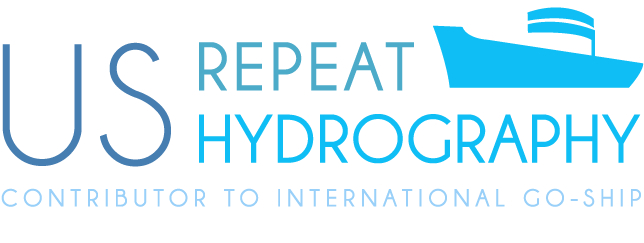
17 March 2016
 by C. Nissen and A. Macdonald
by C. Nissen and A. Macdonald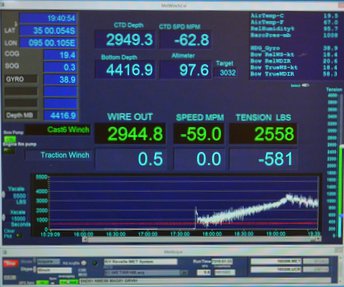
Only three days of sampling left. How could it have all gone so quickly? A week ago we were delighting in positive single digit oxygen temperatures. Our early morning deployment going in at 00:47 (local) and coming up now had surface temperatures of greater than 20°C. Not so long ago the students were learning to tie knots they had never heard of and tagging the rosette sometimes seemed like a hopeless fishing exercise. Now they tie, tag, and hold their lines like professionals. So, is it surprising that even as we wonder at the never-ending supply of crisp lettuce; even as dig deep in our personal stores for offerings to our sample log candy bowl; even as we whip along deploying, recovering and sampling at an impressive efficient clip, that discussion around the rosette should wax nostalgic. We only get to do this X more times. Who gets to do the last deployment? I’ll never have to sample 23 again. Who will sample the last salt? After all even with 38 days at sea, we’ve only had been sampling for three weeks. Who wants to do this again?
This past week we have been managing 4 stations a day. With a 36-bottle rosette and bottom depths less than 4500 m, analysis can’t keep up so we took a two-hour break from deployments yesterday. The delay had the added bonus of giving CDOM a chance to better time their optics cast with satellite fly over. In spite of our efficiency we have still be presented with some challenges. Last Friday we found the floor of hangar slick with what turned out to be oil from a loose hydraulic fitting. We had a couple of casts where we were sliding carefully (and in some cases moon walking) around the rosette until the source of the leak was discovered and a major effort was put out by the crew to clean up both the hangar and deck. And then there was station 59, which took our breath away, but thankfully not our rosette.
Between stations 58 and 59, a precautionary mechanical retermination was performed as the wire was beginning to show signs of wear. On recovery at station 59, as the rosette was being brought in, the termination failed. The rosette hit the boards and then teetered for a terrifying moment on the rail before the winch regained enough control to bring it in. Thankfully, no one was hurt and none of the instruments showed any sign of new issues after this incident. Kudos to our tag-liners who did an excellent job keeping their lines under control. A complete retermination was performed before station 60 and we’ve had no issues since.
Lest you think the science has suffered from these adverse adventures check out our bottom waters: a) the strong CFC (and SF6) signal in the abyss following the line north (57.5°S - °45.6°S) and b) the impressive warming and freshening compared to earlier occupations in our stations between 63°S and 51°S (contours σ4).
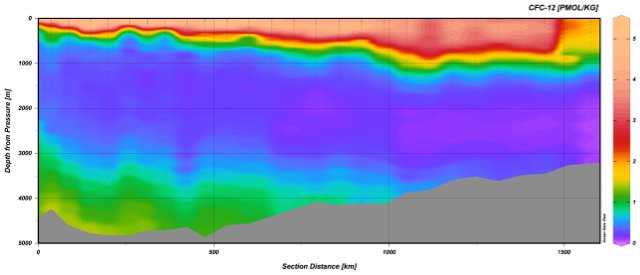
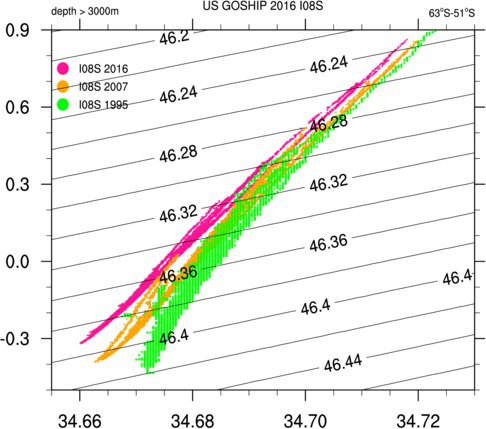
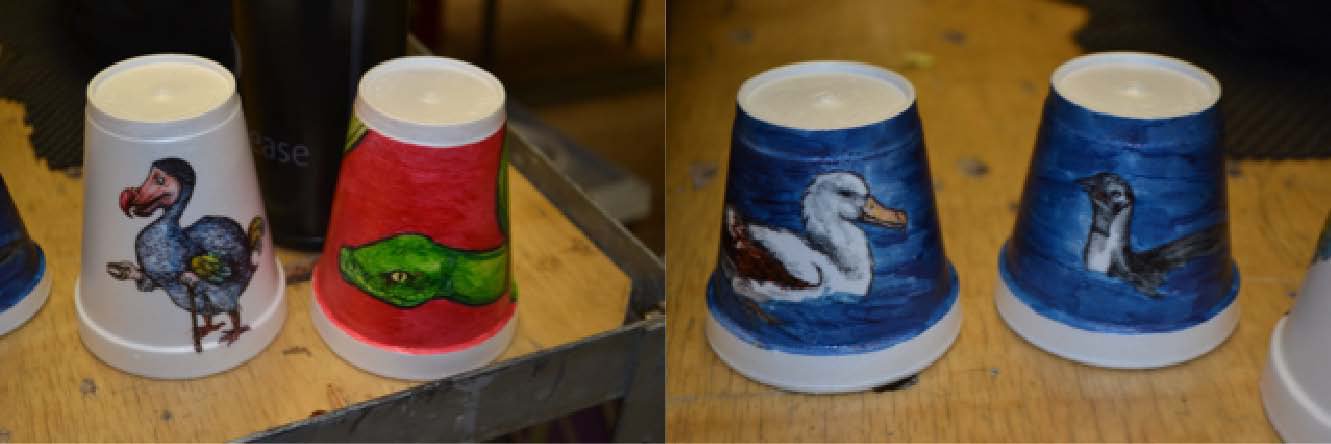
The other day our white board read: “Success consists of going from failure to failure without loss of enthusiasm” (Winston Churchill). We have hardly failed, but we have definitely had some challenges. Yet even we as run out of stations, we have not lost enthusiasm. Taking advantage of our last deep-ish casts, cups are in full production. We fully intend to make it to our final planned station at 28°S before turning east for our 4 day transit back to Fremantle.
